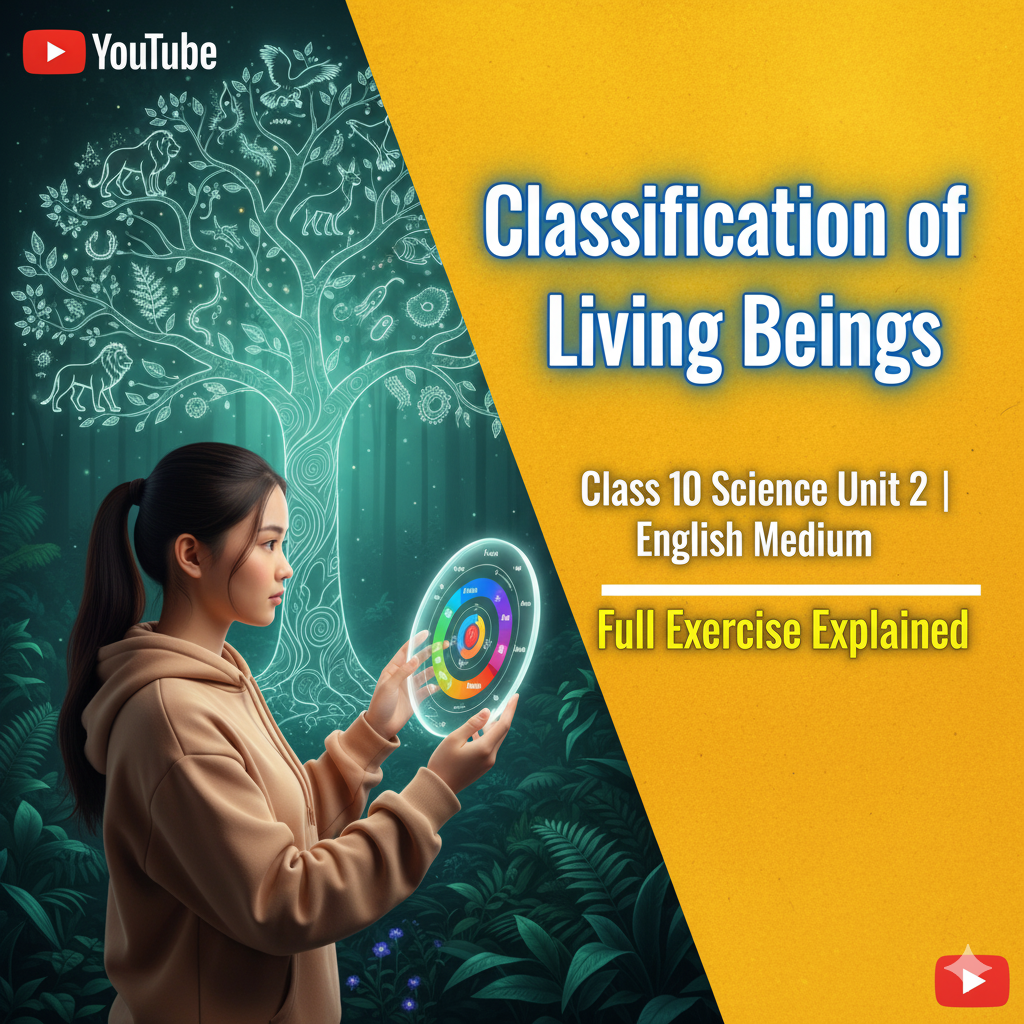Class 10 Science Unit 2: Complete Guide to Classification of Living Beings – Essential Exercise Solutions
Class 10 Science Unit 2 provides an incredible foundation in biological classification systems. This comprehensive guide covers complete exercise solutions, detailed explanations of taxonomy principles, and practical insights to help you master this fundamental chapter about organizing and understanding the diversity of life on Earth.

Understanding Class 10 Science Unit 2: The Science of Biological Classification
Class 10 Science Unit 2 introduces students to the systematic approach of classifying living organisms based on their characteristics and evolutionary relationships. This unit forms the bedrock of biological sciences and helps students understand how scientists organize the incredible diversity of life on our planet.
Fundamental Concepts in Class 10 Science Unit 2
The curriculum for Class 10 Science Unit 2 covers several essential biological principles that form the foundation of taxonomy:
- Basis of classification and taxonomic hierarchy
- Five kingdom classification system
- Binomial nomenclature and its importance
- Characteristics of major plant and animal groups
- Modern classification systems and DNA analysis
Taxonomic Hierarchy in Class 10 Science Unit 2
When studying Class 10 Science Unit 2, you’ll explore the systematic arrangement of organisms into hierarchical categories. Understanding the sequence from species to kingdom and the characteristics that define each level is crucial for mastering biological classification principles.
Five Kingdom System in Class 10 Science Unit 2
A significant portion of Class 10 Science Unit 2 focuses on Robert Whittaker’s five kingdom classification. You’ll learn about Monera, Protista, Fungi, Plantae, and Animalia kingdoms, understanding their distinctive features, examples, and the evolutionary relationships between them.
Important Memory Tip for Class 10 Science Unit 2
Creating mnemonic devices is absolutely essential when studying Class 10 Science Unit 2. For taxonomic hierarchy, remember “King Philip Came Over For Good Soup” (Kingdom, Phylum, Class, Order, Family, Genus, Species). This technique significantly improves recall during examinations.
Binomial Nomenclature in Class 10 Science Unit 2
The system of binomial nomenclature forms a critical component of Class 10 Science Unit 2. You’ll learn about Carl Linnaeus’s contribution to taxonomy, the rules for scientific naming, and why this universal system is essential for clear communication among scientists worldwide.
Plant Kingdom Classification in Class 10 Science Unit 2
Understanding plant classification is vital in Class 10 Science Unit 2. This section covers thallophytes, bryophytes, pteridophytes, gymnosperms, and angiosperms, focusing on their distinguishing characteristics, reproductive methods, and evolutionary significance.
Animal Kingdom Classification in Class 10 Science Unit 2
The exercise section of Class 10 Science Unit 2 extensively covers animal classification based on fundamental characteristics like symmetry, germ layers, body cavity, and segmentation. Understanding these classification criteria is crucial for solving problems and answering examination questions effectively.
Additional Resources for Class 10 Science Unit 2
To further enhance your understanding of Class 10 Science Unit 2, we recommend exploring these valuable external resources:
- Official CDC Nepal Website – Access the official curriculum and syllabus details
- CDC Digital Library – Explore additional reference materials and textbooks
- Social Guide – Find alternative explanations and practice questions
- YouTube Video Tutorial – Watch visual explanations of classification concepts
Exam Preparation Strategies for Class 10 Science Unit 2
When preparing for examinations, focus particularly on classification criteria, kingdom characteristics, and binomial nomenclature from Class 10 Science Unit 2. These topics consistently appear in board examinations and typically carry significant marks. Create comparative charts of different kingdoms and their features for quick revision.
Pro Tip for Class 10 Science Unit 2
Create classification flowcharts for different organisms covered in Class 10 Science Unit 2. This visual learning technique significantly improves understanding of hierarchical relationships and will help you quickly classify organisms during examinations. Practice with common examples from each kingdom.
Common Challenges in Class 10 Science Unit 2
Students often struggle with remembering classification criteria and distinguishing between similar groups when studying Class 10 Science Unit 2. Focus on understanding the evolutionary significance of each characteristic rather than rote memorization. This conceptual approach makes classification logical and memorable.
Modern Classification Systems in Class 10 Science Unit 2
The concepts in Class 10 Science Unit 2 extend to modern classification approaches including phylogenetic systems and DNA analysis. Understanding how molecular biology has revolutionized taxonomy demonstrates the dynamic nature of scientific knowledge and its continuous evolution.
Practical Applications of Class 10 Science Unit 2
Studying Class 10 Science Unit 2 has numerous practical applications in fields like medicine, agriculture, conservation, and biotechnology. Understanding classification helps in identifying medicinal plants, conserving endangered species, developing new crops, and understanding disease-causing organisms.
Historical Development in Class 10 Science Unit 2
Class 10 Science Unit 2 also covers the historical development of classification systems from Aristotle’s simple division to modern phylogenetic approaches. Understanding this evolution helps appreciate how scientific knowledge builds upon previous discoveries and adapts to new evidence.
Conclusion: Mastering Class 10 Science Unit 2
Class 10 Science Unit 2 on Classification of Living Beings represents one of the most fundamental chapters in biological sciences. By thoroughly understanding taxonomic principles, kingdom characteristics, classification criteria, and nomenclature systems covered in this unit, you’ll develop essential knowledge that forms the foundation for advanced biological studies.
Use the exercise solutions provided above to test your understanding, identify areas needing improvement, and reinforce your learning. Remember to focus on conceptual understanding rather than memorization, as this approach will help you apply classification principles to unfamiliar organisms. For more educational resources and study materials, explore our other posts on Class 10 Science topics to maximize your academic success and develop a deeper appreciation for the incredible diversity of life on Earth.
